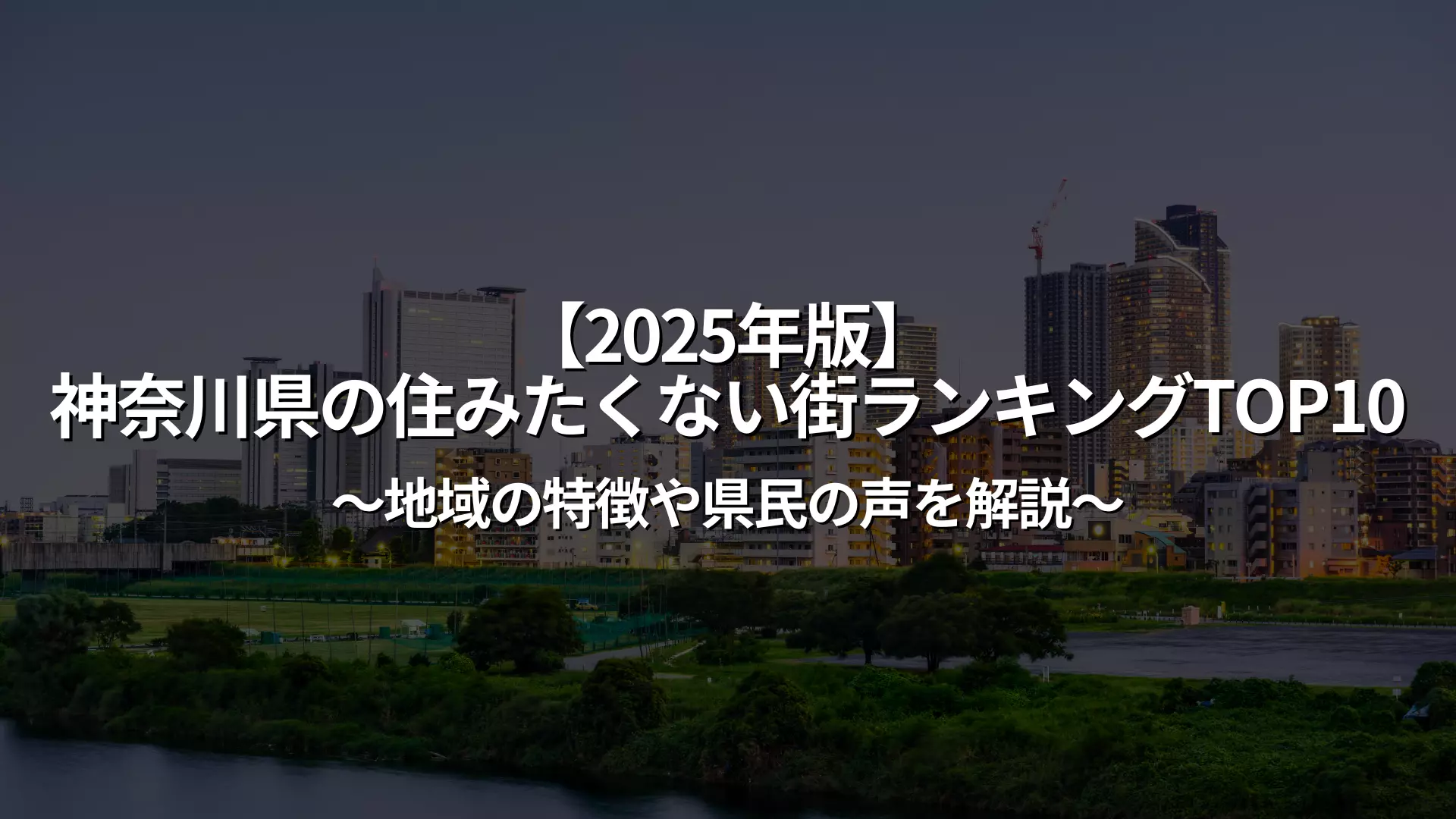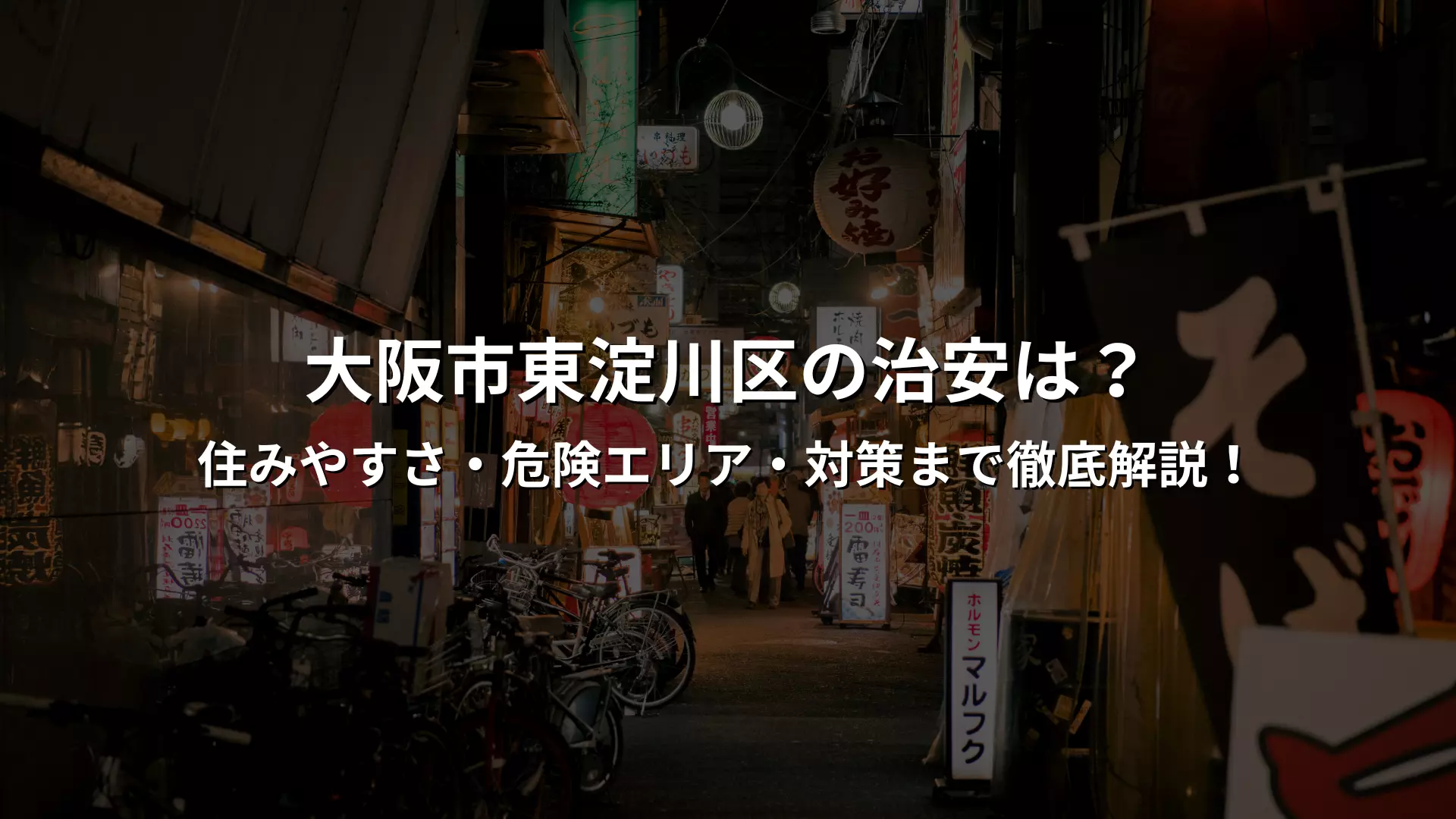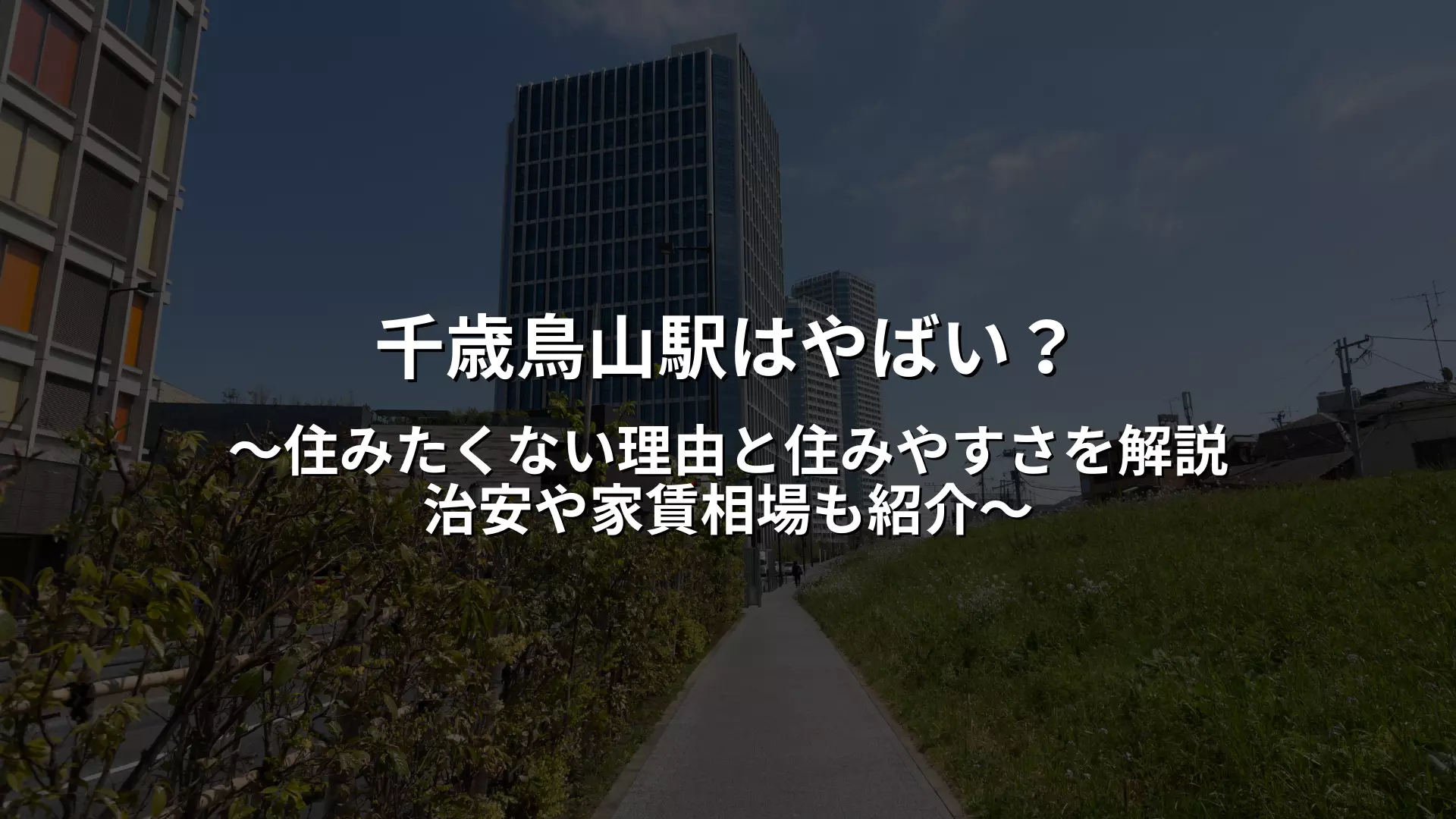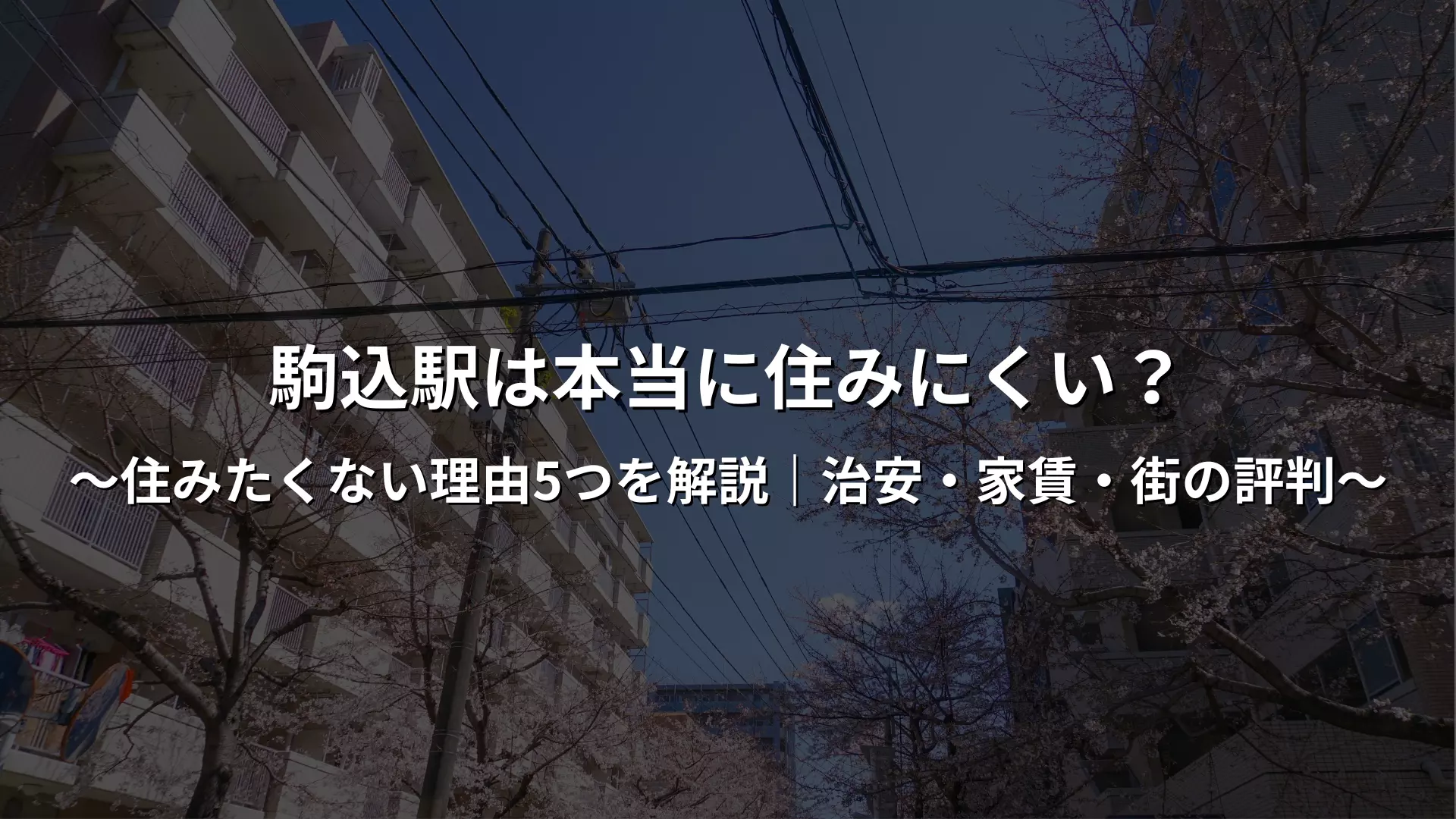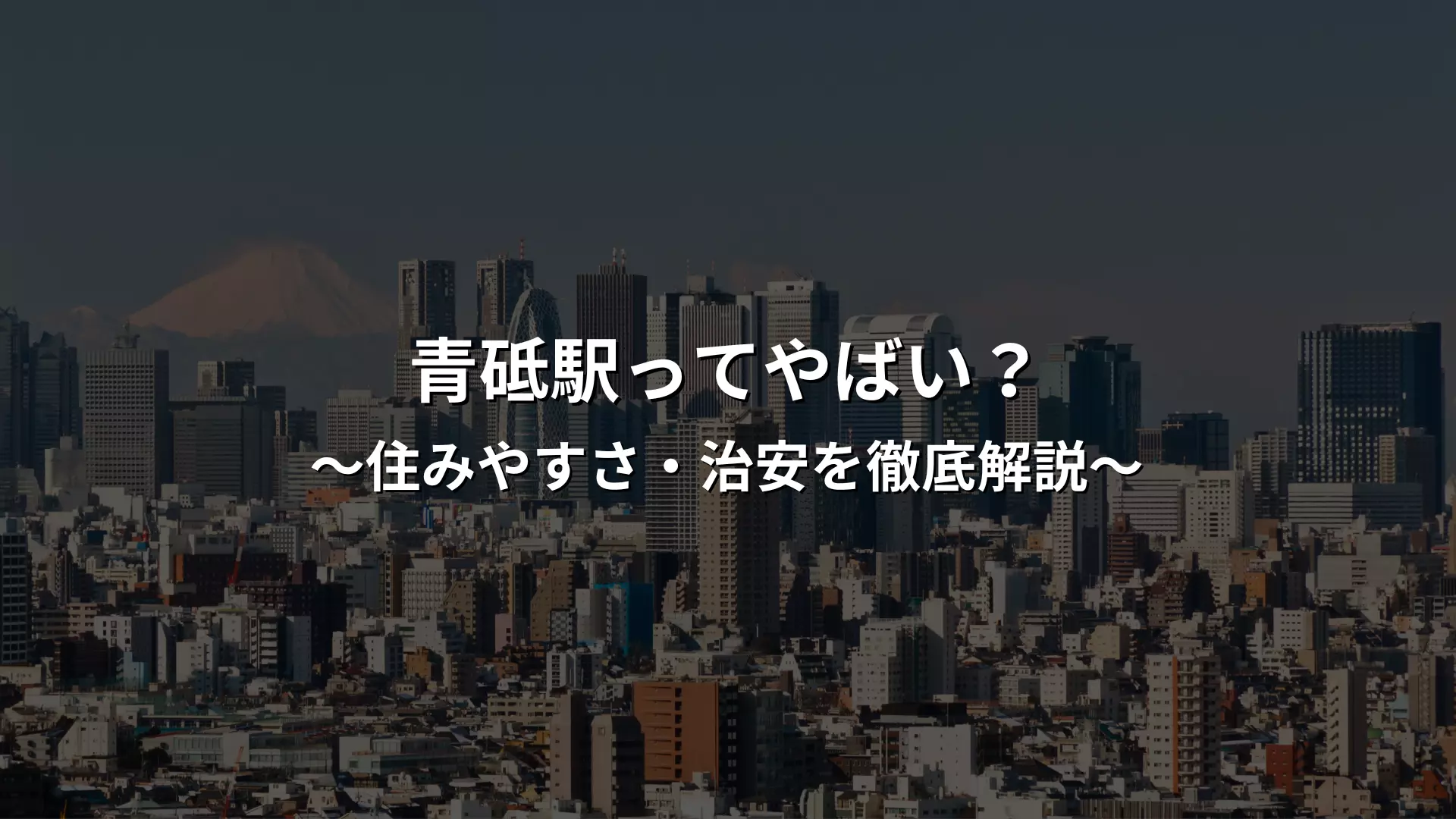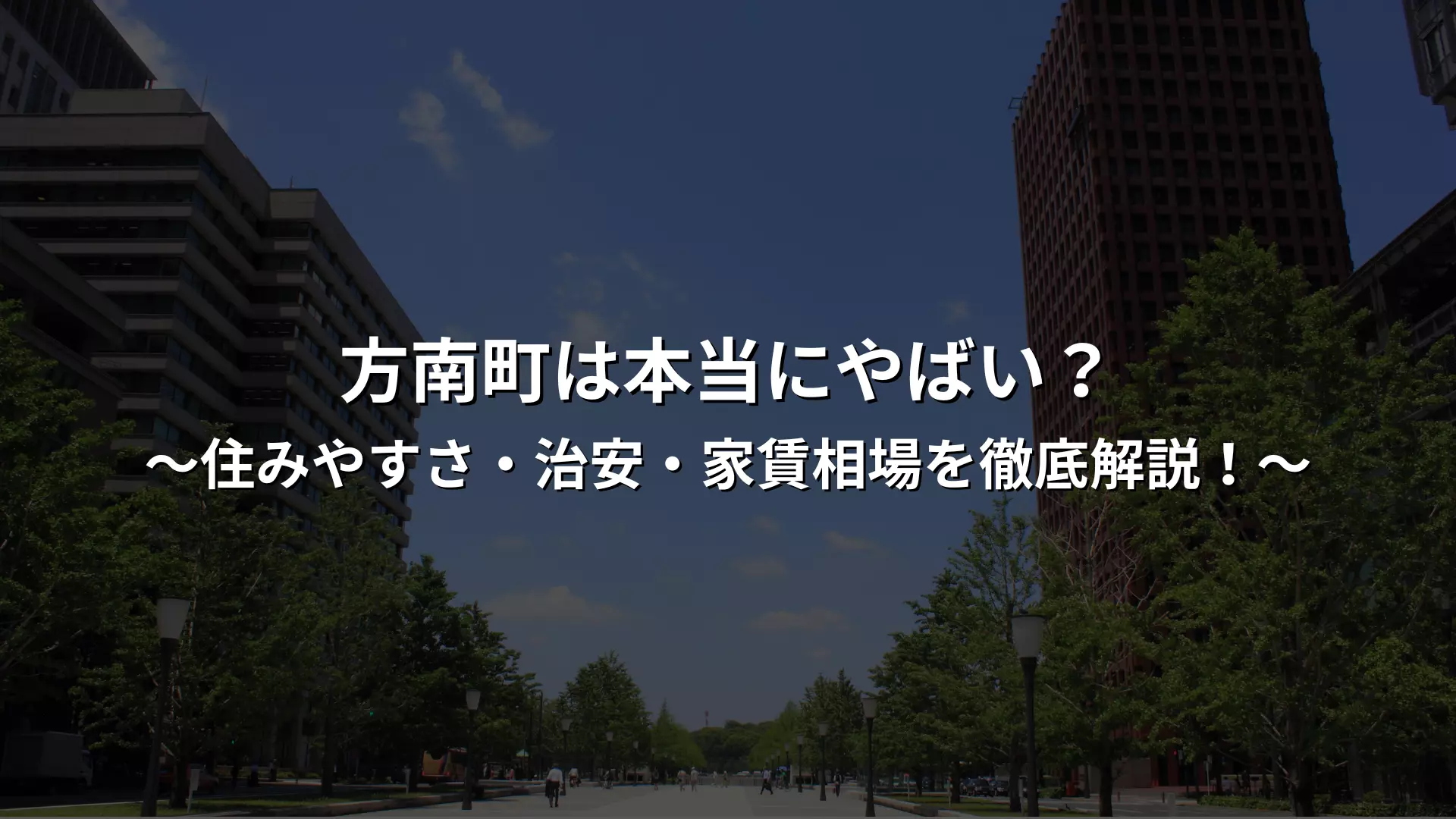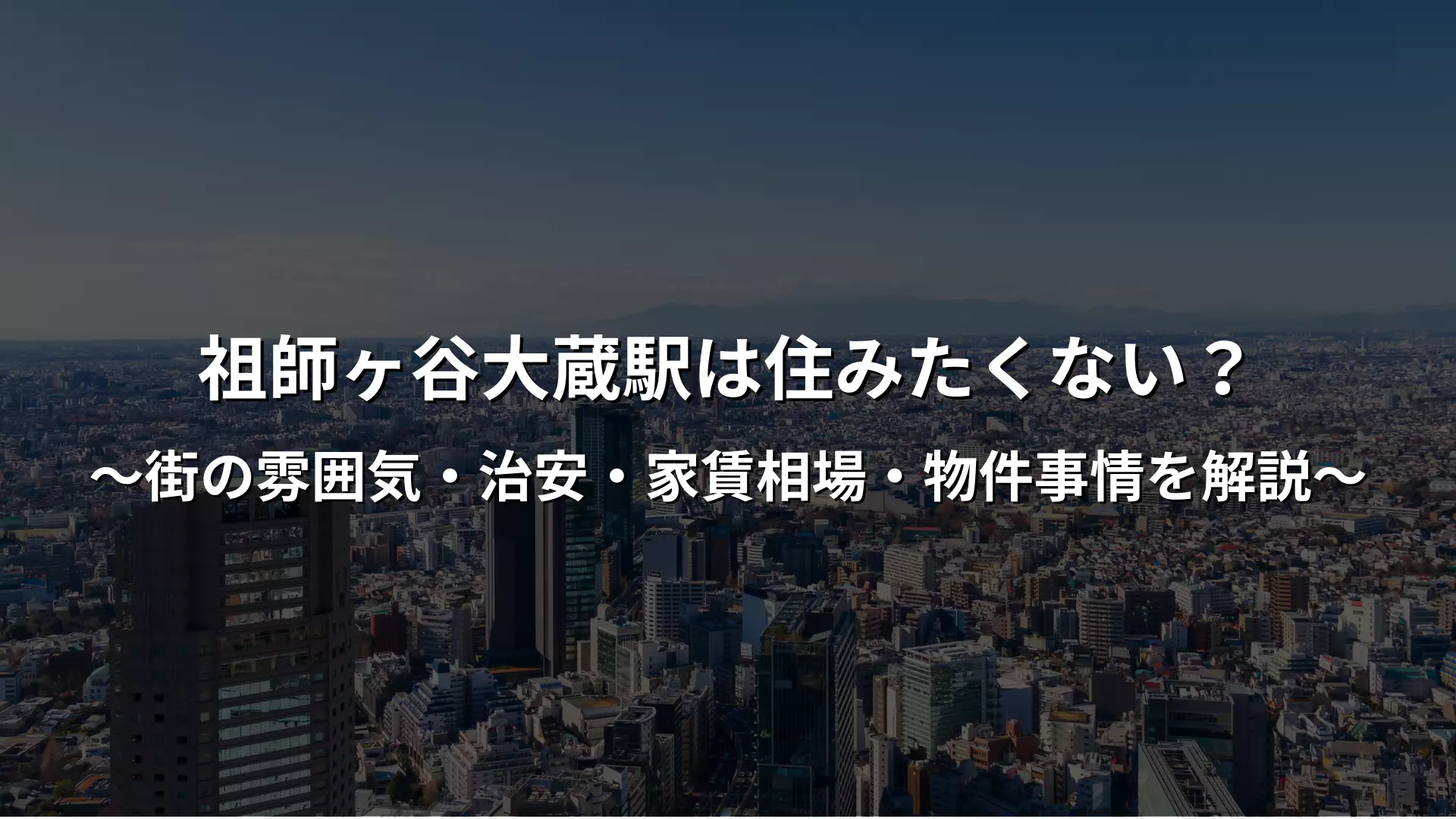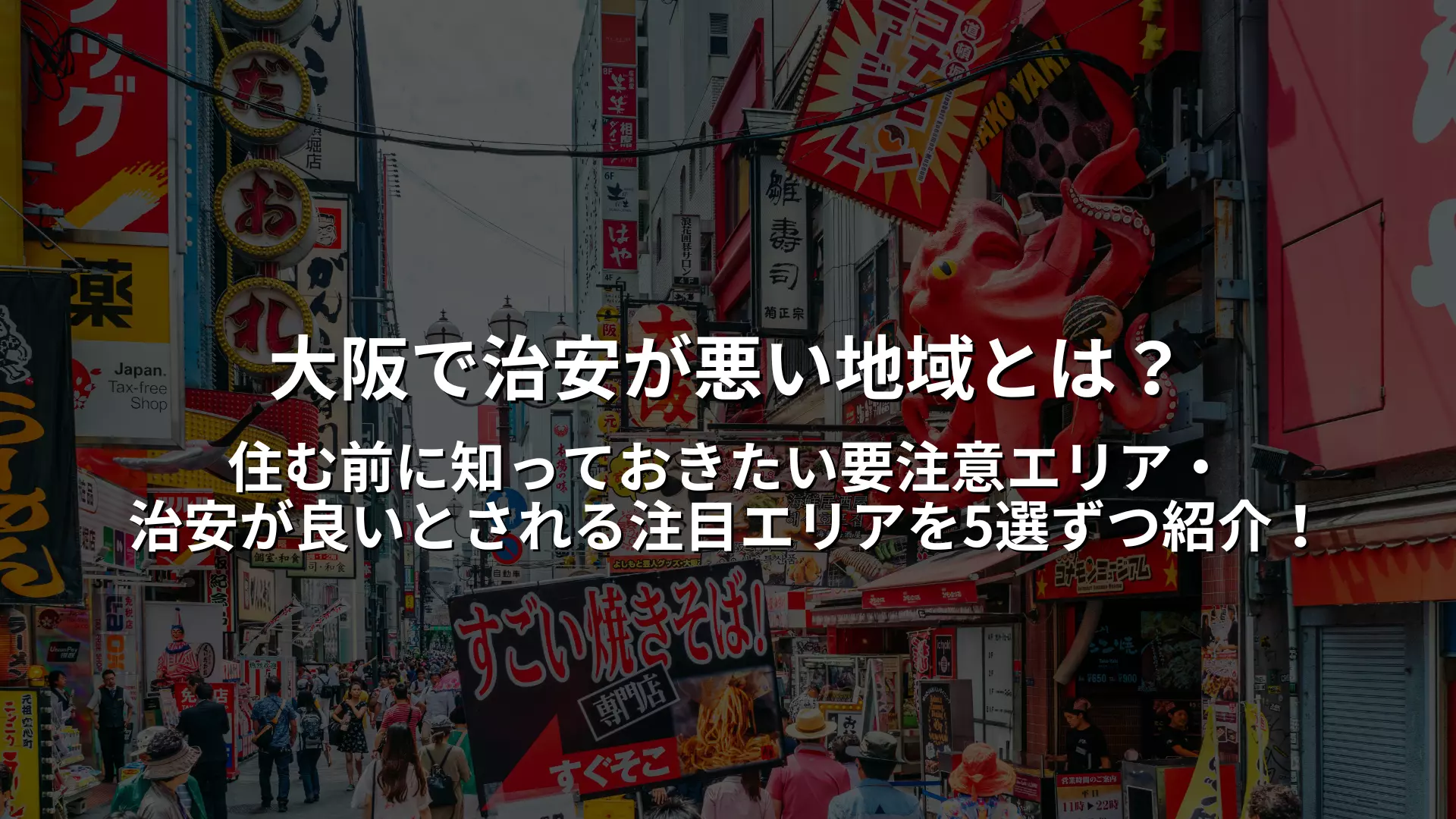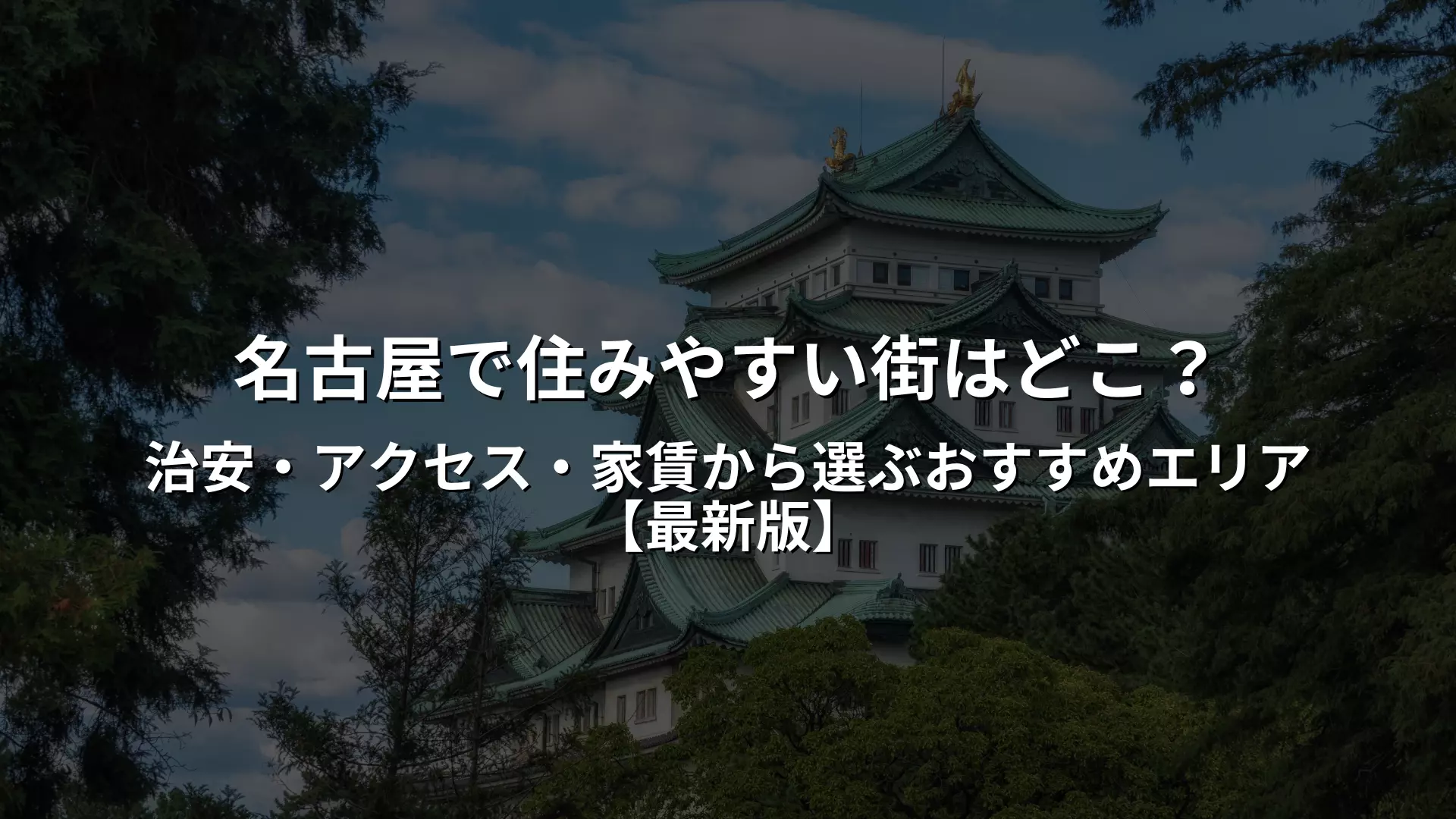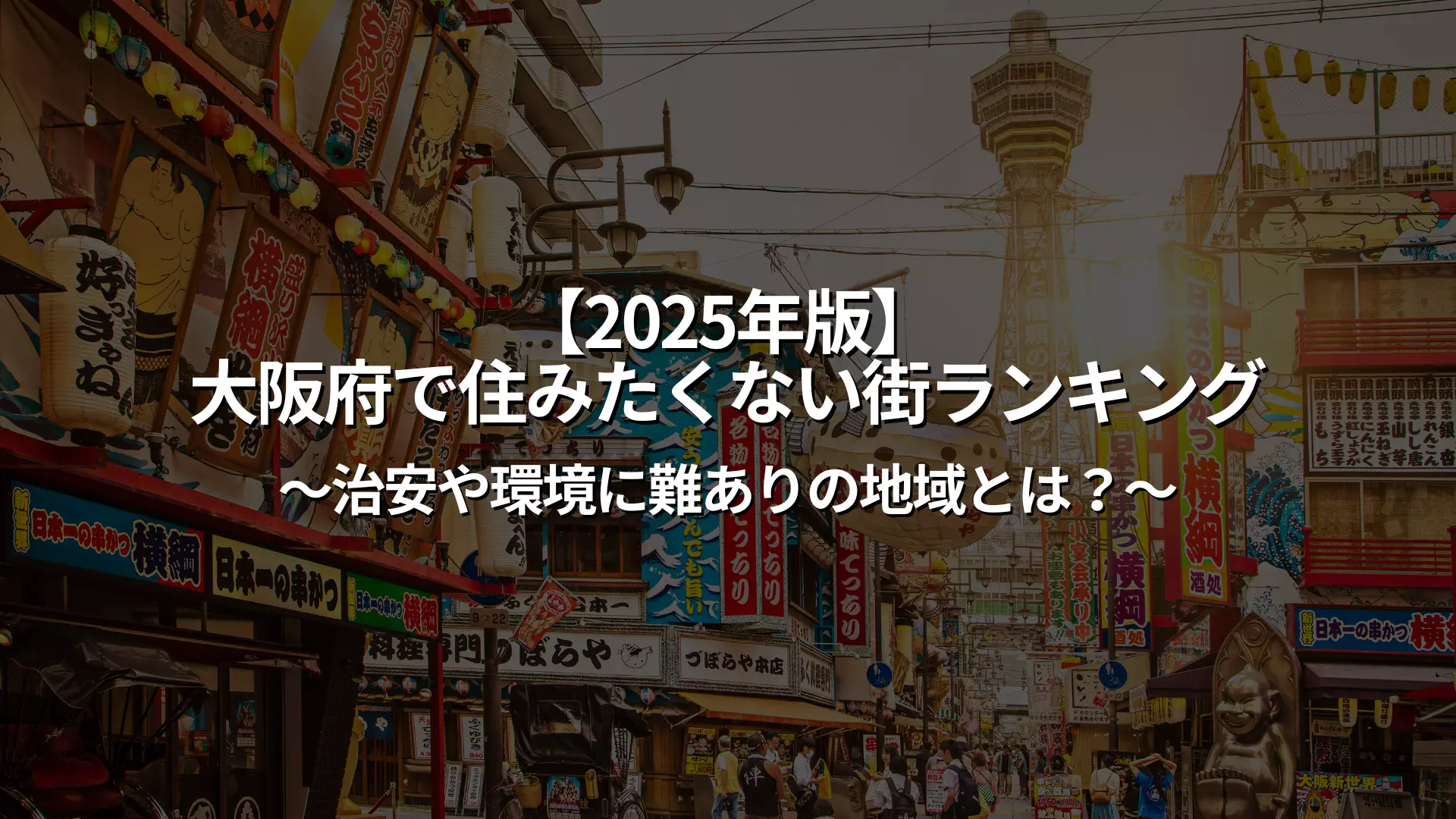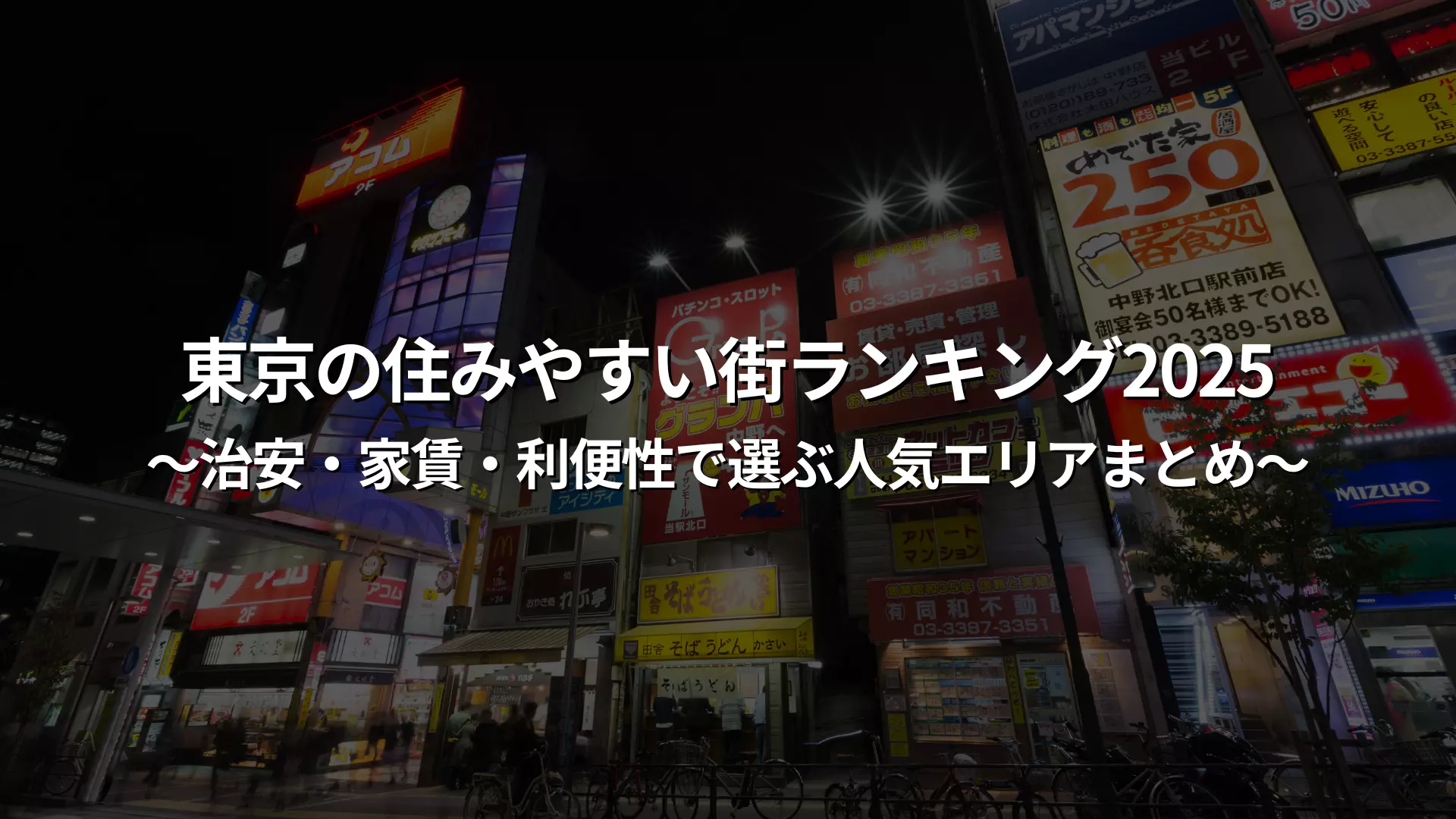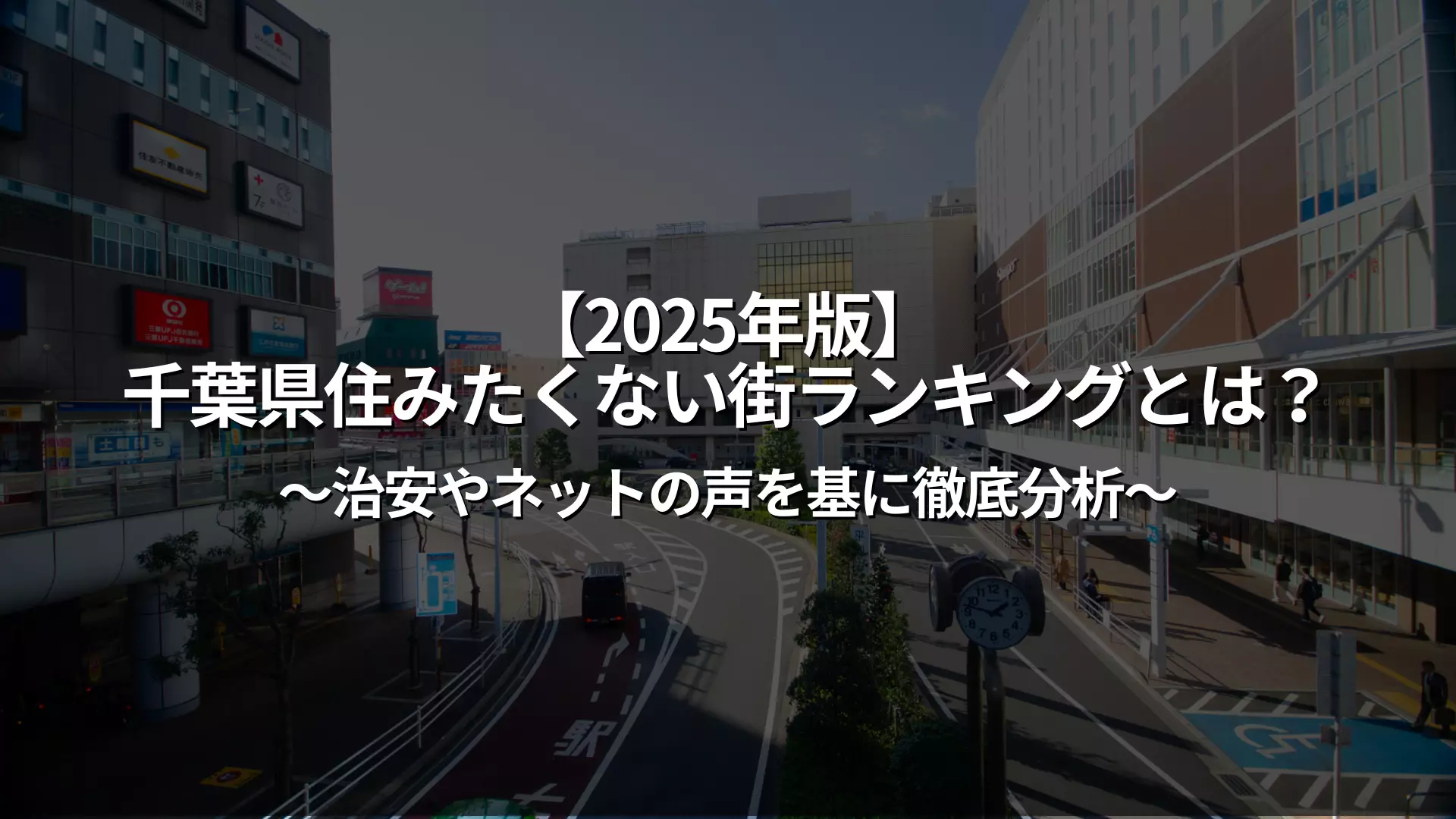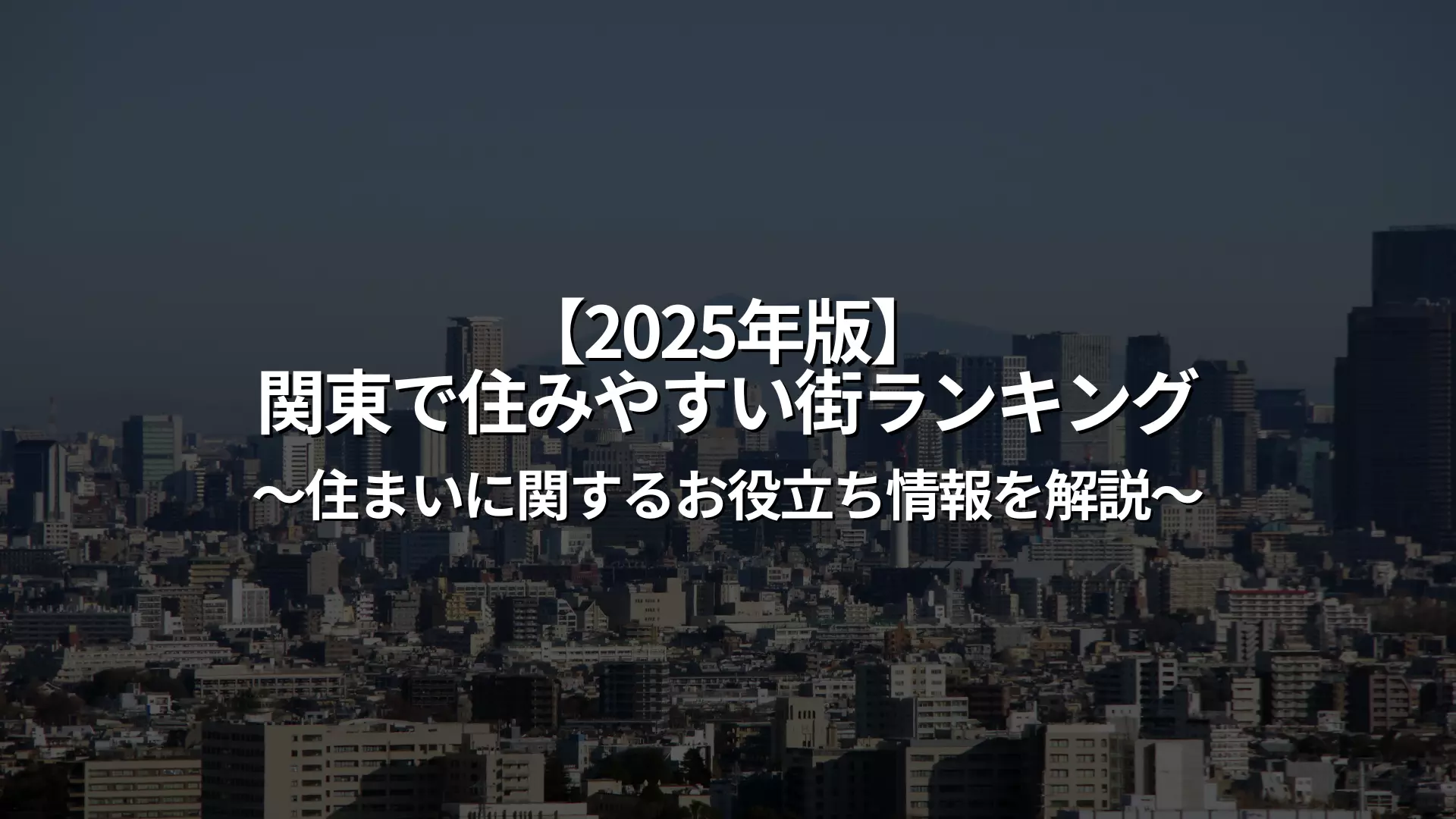What are the characteristics of cities in Kanagawa that people say they "don't want to live in"?
Kanagawa Prefecture has many attractive towns, but there are also areas that are considered "difficult to live in. There are various reasons for this, including security, noise, inconvenient transportation, and lack of convenience for daily life.
In addition, areas near tourist sites and downtown areas are always crowded, making them unsuitable for people looking for a calm lifestyle. In some areas, the quality of the living environment is not commensurate with the high rent, and there are many complaints from residents. Furthermore, people tend to avoid areas with a high proportion of foreigners and where there is a cultural gap, as well as areas with a high risk of natural disasters.
In this chapter, we will take a closer look at the characteristics of cities in Kanagawa that are considered "unwelcome places to live."
The rent is too high and the living conditions are not good.
Kanagawa Prefecture has many popular areas, such as Yokohama and Kamakura, and the average rent is set high by metropolitan standards. However, there are many cases where the quality of the housing and the surrounding living environment do not match the high rent.
For example, areas with problems such as excessive noise, poor sunlight, and many old buildings are often cited as being poor value for money.
Even in areas considered to be high-end residential areas, some people find it difficult to live there due to factors such as distance from the station or a lack of infrastructure.
When there is a gap between the rent and the actual comfort of living there, it's only natural that some people will say they never want to live there again.
I am worried about public safety, such as crime rates and noise levels.
"Public safety" is a major factor in determining how easy it is to live in a city. Even within Kanagawa Prefecture, crime rates are high, particularly in some areas of Kawasaki and Yokohama, and many residents have expressed concerns.
People tend to avoid areas where it is dangerous to walk alone at night, or where there are many cases of petty crimes such as snatch thefts and burglaries. Noise problems are also serious near downtown and entertainment districts, and many residents are bothered by the noise of drunken thieves and motorcycles.
In areas where public safety is a concern, the stress of continuing to live there is high, and the area is often perceived as a place people do not want to live because it is not a safe place to live.
I feel uneasy in my daily life in tourist areas and downtown areas.
Areas close to tourist attractions and downtown areas tend to attract a lot of people from outside and always be very busy.
For example, Kamakura City and Naka Ward, Yokohama City are famous tourist spots, but they are crowded with tourists on weekends and holidays, and local residents often feel stressed. Also, while living in a downtown area means you won't have any trouble finding restaurants and entertainment facilities, it also comes with negative aspects such as noise late into the night, a lot of litter, and a high chance of drunk trouble.
In this way, convenience is exchanged for the loss of "everyday tranquility," and the area is often avoided by people seeking a quiet and peaceful lifestyle.
There is a high ratio of foreigners and a cultural gap
Kanagawa Prefecture is close to the Tokyo metropolitan area and is also an area with a large foreign population.
Kawasaki City and parts of Yokohama City have a particularly high percentage of foreign residents and are characterized by an international environment, but at the same time, there are still a certain number of people who feel a cultural gap. Differences in lifestyle, language, and culture can cause neighborhood troubles and friction within the local community. Also, while the number of restaurants and facilities for foreigners is increasing, many residents feel that the scenery and atmosphere of the area has changed.
While it is seen as a positive symbol of diversity, it can also be a factor that makes some people feel uncomfortable living there.
Be aware of the inconvenience of access and shopping, as well as the risk of disasters
In Kanagawa Prefecture, there are areas with good access to the city center, but there are also areas without train stations where travel by car is the norm. In particular, in areas with underdeveloped train networks such as Ayase City and Zama City, commuting to work or school is inconvenient, which is a major factor making it difficult to live there.
In addition, in areas where there is a lack of basic infrastructure such as supermarkets and drugstores, it can take a long time to go shopping for everyday items. Furthermore, coastal towns are at high risk of disasters such as tsunamis and high tides, so it is important to pay attention to these on hazard maps.
Areas that receive low ratings in terms of both convenience and safety tend to be ranked as "cities you don't want to live in."
Kanagawa Prefecture Top 10 cities you don't want to live in
Kanagawa Prefecture has many popular tourist and residential areas such as Yokohama and Kamakura, but there are also areas where people say they "never want to live again." In fact, when people actually live there, they are often plagued by gaps between what they expected and the living environment, such as high rents, poor security, and inconvenient access.
In this chapter, we will introduce the cities in Kanagawa Prefecture that are considered "difficult to live in" in a ranking format based on word of mouth, crime rate, convenience of life, etc. Please take a look at this as a reference for moving or choosing a property.
No.1: Kawasaki Ward, Kawasaki City
Kawasaki City's Kawasaki Ward is an area in Kanagawa Prefecture that has a particularly bad reputation for its "bad security." There are many crimes occurring, and in some areas it is recommended to avoid walking alone at night.
In addition, there are many factories in the area, and many people are dissatisfied with the air and noise pollution. Furthermore, while there is a high percentage of foreign residents and a multicultural environment, there are also voices expressing concerns about cultural gaps and communication difficulties.
Although the average rent is low, it does not meet the need to live in peace, which is why many people say they "don't want to live here anymore."
No. 2: Naka Ward, Yokohama City
Yokohama's Naka Ward has many tourist attractions, and many residents complain about the crowds and noise from tourists. Areas such as Yamashita Park, Chinatown, and Motomachi are attractive, but they are not suitable for people looking for a quiet lifestyle. Furthermore, while rent is very high, there are many old buildings and narrow roads, which can raise questions about the convenience of living there.
The ratio of foreign residents is high, and depending on the area, differences in culture and lifestyle can make it difficult to live there. While it has a strong image as a fashionable, tourist-friendly city, there is a big gap when it comes to living there, which is why it is ranked so highly.
3rd place: Nishi Ward, Yokohama City
Nishi-ku, Yokohama City, which is centered around Yokohama Station, is always crowded with commercial facilities. The crime rate is also high, and troubles have been reported especially in the downtown area at night. Furthermore, the average rent is among the highest in Yokohama City, which is a disadvantage for single people and families as it is a heavy financial burden.
It is a city that is often avoided by people who seek a quiet life and good public safety in exchange for convenience. Although it has excellent transportation access, there are few places where you can live peacefully, so many people feel that they "don't want to live there."
No.4: Atsugi City
Although Atsugi City has a strong image as a suburban residential area, there are cases where the noise problem from Atsugi Air Base is interfering with daily life. Many residents feel stressed, especially in areas where the noise of aircraft taking off and landing is a particular nuisance.
In addition, some people complain that it takes a long time to commute to the city center, and that commercial facilities are concentrated in the city center, making it somewhat inconvenient for daily shopping. The average rent is relatively low, but the living environment has many issues, so young people and families have said that it is "difficult to live in," which has resulted in it being ranked high.
No.5: Chuo Ward, Sagamihara City
Sagamihara City's Chuo Ward is a lively city with many students, but it also tends to have the impression of being noisy.
Additionally, in areas far from train stations, people often have to rely on bus services, which means commuting to work or school takes a long time. Shopping facilities are also unevenly distributed depending on the area, and there are concerns that the convenience of living varies greatly depending on where you live. Although it may appear to be a peaceful residential area at first glance, the noise at night and the inconvenience of transportation can be stressful.
There are many elements that are unsuitable for people who seek convenience or want to live quietly, and this is cited as a reason why people do not want to live there.
No.6: Tsurumi Ward, Yokohama City
Yokohama's Tsurumi Ward is close to an industrial area, and some people have complained about poor air quality and noise pollution. The eastern area is also at high risk of flooding, and the hazard map includes areas that require caution.
The transportation infrastructure is unevenly distributed depending on the area, and there are areas in the west that do not have train stations, making travel inconvenient. While the area is rich in diversity with a high proportion of foreign residents, some people feel uneasy about interactions between residents and the security situation.
Although it is located within Yokohama City, there are many stressful elements to the living environment, and it is listed as one of the cities people do not want to live in.
No.7: Yokosuka City
Yokosuka City is attractive for its beautiful cityscape facing the sea, but some people feel uneasy about public safety due to the presence of a U.S. naval base. There are also areas with a high ratio of foreign residents, and many people feel confused by contact with different cultures.
In addition, there are many hills and many situations where daily transportation is difficult by foot or bicycle, making it unsuitable for elderly people and families with children. Furthermore, because it is by the sea, the risk of disasters such as tsunamis and high tides cannot be ignored.
It has a strong image as a tourist destination and a military port, and is said to have many issues as a place to live, so there is a certain number of people who do not want to live there.
No.8: Ebina City
Redevelopment is progressing in Ebina City and its convenience is improving, but some people say that the congestion around the station is a daily occurrence and causes stress.
In addition, access to central Tokyo and Yokohama is sometimes rated as "half-baked," and many people find commuting to work or school inconvenient. Furthermore, the crime rate is slightly higher than the prefectural average, so it lacks the impression of being a safe place to live.
In exchange for convenience such as shopping malls, there are concerns about noise and safety, and the area often features in rankings of places people do not want to live.
9th place: Zama City
Zama City has few train stations, and many areas rely mainly on bus transportation, making commuting to work or school an issue. The city is adjacent to the Atsugi Air Base, and aircraft noise is also a stressor for residents. There are also complaints about the inconvenience of everyday shopping and eating out, as there are few supermarkets and restaurants in the area.
Furthermore, while there is a lot of nature, some people are concerned about the lack of infrastructure, such as medical facilities and educational facilities. Because of the limited freedom of living, it is often considered unsuitable for young people and those raising children, and is often rated as a "difficult city to live in."
No.10: Fujisawa City
Fujisawa City is a popular area close to the sea and blessed with nature, but it is also known as a tourist destination and tends to be crowded with tourists on weekends and holidays. This can make it difficult for local residents to live a peaceful life. Furthermore, there are differences in public safety and transportation access depending on the area, so if you choose the wrong place to live, you may experience inconvenience.
Rent prices are also on the rise, and in some cases it is difficult to choose this area from a cost-performance perspective. Opinions are divided not only on the scenery and convenience, but also on the actual livability, making it one of the areas people do not want to live in.
Search from 6,613 rooms of 973 properties
Five common characteristics of "towns you don't want to live in" in Kanagawa Prefecture
While Kanagawa Prefecture has many popular residential areas, there are certain commonalities among the towns that are considered "difficult to live in." Understanding these conditions can help you avoid mistakes when moving or choosing a property.
Here we will take a closer look at five common characteristics of cities that are unpopular among their residents.
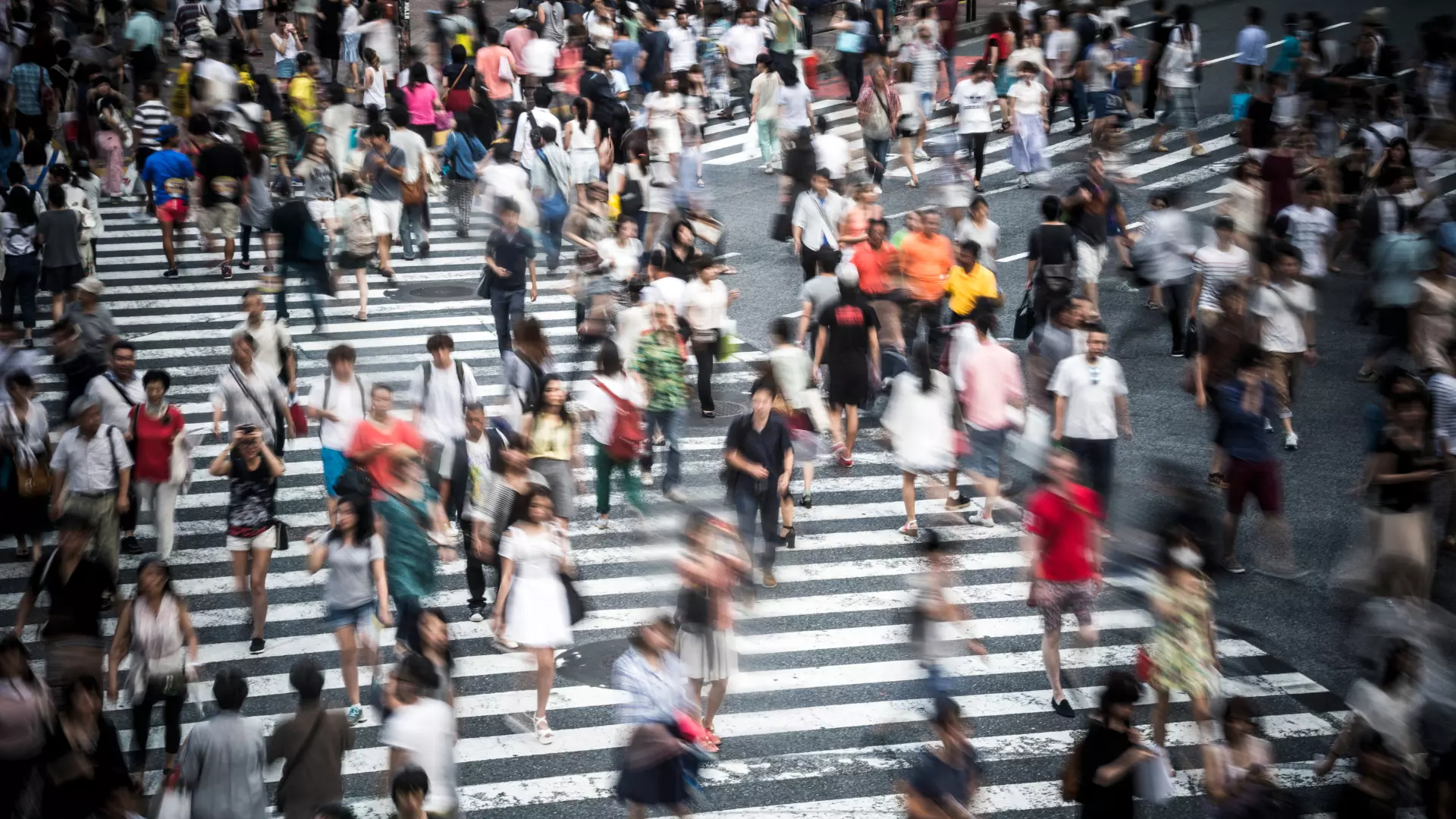
① Public safety concerns
A common theme in many of the cities in Kanagawa Prefecture that people do not want to live in is "concerns about public safety." In particular, Kawasaki City's Kawasaki Ward and Yokohama City's Naka Ward have relatively high crime rates, and many people feel uneasy about going out at night or walking alone as a woman. In areas where minor crimes such as snatching, burglary, and nuisances are prominent, people tend to feel stressed about continuing to live there.
Areas with inadequate crime prevention measures or locations close to busy areas are a major source of anxiety for residents, so you should make careful decisions when deciding where to move. Good public safety is one of the most important points for living a comfortable life.
② Too much noise and congestion
Cities that people consider undesirable to live in include many areas that are plagued by noise and crowds.
For example, in Kamakura City and Nishi Ward, Yokohama City, where tourist spots are concentrated, the area is overflowing with tourists and shoppers on weekends, making it difficult for many people to live a peaceful life. In addition, in downtown areas near train stations and around commercial facilities, noise problems are likely to occur due to restaurants that are open late into the night and major roads with heavy traffic.
Especially for families and elderly people who seek a quiet living environment, this type of noise can be a major negative factor and make them not want to live there.
3) The average rent is too high
Another reason people don't want to live there is that the living environment is not commensurate with the high rent.
In areas close to urban areas, such as Yokohama's Naka Ward and Nishi Ward, the average rent is extremely high, at over 100,000 yen per month, and many people question the cost-effectiveness of the property. In some cases, rents are set high even for old buildings that are poorly equipped, or properties with noise or security issues, leading to complaints that "despite paying a lot of money, they cannot live comfortably."
In particular, for single people and families with children, the burden of rent can easily become a strain on their lives, and as a result, they tend to avoid the area as a "city they don't want to continue living in."
4. The station is far away and transportation access is poor.
The distance to the train station and the lack of convenient transportation are also major factors that make the area seem difficult to live in.
In cities such as Ayase and Zama, there are almost no train stations within the city, so commuting to work or school is extremely inconvenient as people have to rely on buses and cars to get around. In addition, in areas where it takes more than 15 minutes to walk to a station, daily commuting can be stressful, and dissatisfaction is particularly high during bad weather. Furthermore, in areas with poor access to the city center, transportation costs and travel time are a big burden, and time loss becomes a daily occurrence.
Areas with poor transportation access tend to be rated as "difficult to live in" because they do not fit with modern lifestyles that demand convenience.
5) There are many areas at risk of disasters
Kanagawa Prefecture has many areas close to the sea and rivers, and many areas are at risk of disasters such as tsunamis, high tides, and river flooding. In particular, in parts of Yokosuka City and Tsurumi Ward, there are residential areas in areas that are considered dangerous on hazard maps, so it is important to prepare for disasters.
In addition, some hilly areas are designated as landslide hazard zones, and some residents feel uneasy during periods of heavy rainfall. Areas with high disaster risk are not safe places to live, as they are always faced with worries about rising insurance premiums and evacuation systems.
For households that prioritize safety, a high disaster risk is a major negative point when choosing a place to live.
Frequently Asked Questions Q&A
When searching for a home in Kanagawa Prefecture, many people have questions such as "Which city is the easiest to live in?" and "Which city is the hardest to live in?" In particular, safety, noise, accessibility, and the comfort of the surrounding environment are all points that greatly influence the decision to move.
Here we answer frequently asked questions from readers regarding cities in Kanagawa Prefecture that people would not want to live in.
Q. Are Kawasaki and Tsurumi really unsafe?
Kawasaki City's Kawasaki Ward and Yokohama City's Tsurumi Ward are areas that are often said to be "unsafe" within Kanagawa Prefecture. Indeed, looking at crime statistics from the National Police Agency, the incidence of burglaries, snatch thefts, and violent crimes tends to be higher than in other areas.
In addition, since the area is close to downtown and entertainment districts, there are cases where drunk people and noise pollution can be a problem at night, and there are many concerns from women living alone and families with children.
However, not all areas are dangerous, and the security situation varies greatly depending on the area. It is important to make a careful decision by referring to the latest crime prevention maps and local reviews.
Q. Is it dangerous to live near a U.S. military base?
In Kanagawa Prefecture, if you live in an area near a U.S. military facility such as Atsugi Air Base or Yokosuka Air Base, you are more likely to be bothered by noise and differences in living environment than by public safety.
In particular, in areas where the sounds of aircraft taking off and landing echo late at night and early in the morning, there are concerns about the impact on sleep and stress. Also, with many foreign residents, you may be confused by the language and cultural differences.
Although serious security issues do not occur frequently, it may not be suitable for people looking for a quiet and peaceful life. We recommend checking the opinions of neighboring residents and local information before moving in.
Q. How inconvenient is it to live in an area that is far from a station?
In Kanagawa Prefecture, there are residential areas that are more than 15 minutes walk from the station, and even cities, towns, and villages that do not have train stations (e.g. Ayase City). In these areas, daily transportation depends on buses and cars, which can make commuting to work or school very inconvenient.
In addition, if access to the nearest station is poor, there is a high possibility that bad weather or traffic problems will cause disruption to daily life. In particular, families with children and the elderly should be careful as the distance to the station can be a big burden. The convenience of being close to a station is one of the major advantages that makes it worth the higher rent.
Q. Is it not advisable to live in a tourist area?
Living in a tourist area has its pros and cons.
For example, areas with many tourist spots, such as Kamakura City and Naka Ward in Yokohama City, have beautiful streetscapes and plenty of restaurants and cafes.
However, on the other hand, it is crowded with tourists on weekends and holidays, making daily life unsettled. In addition, stress factors specific to tourist destinations, such as traffic jams, increased garbage, and late-night noise, are likely to occur.
Although it is convenient and has a nice atmosphere, it may not be suitable for people who value quietness and comfort as a place to live. If you are choosing it as a residential area, it is wise to consider a residential area a little away from tourist spots.
Search from 6,613 rooms of 973 properties
5 Livable Towns and Stations in Kanagawa Prefecture (Comparison Reference)
Kanagawa Prefecture is home to many "livable towns and stations" that offer a good balance between convenience and living environment.
Here we will introduce five towns and stations that have been carefully selected from a variety of perspectives, including transportation access, public safety, educational environment, and convenience for daily life.
① Hiyoshi Station | The perfect combination of safety, educational environment, and accessibility
Hiyoshi Station is a highly convenient terminal station where the Tokyu Toyoko Line, Meguro Line and Yokohama Municipal Subway Green Line intersect. It has excellent access to the city center and Yokohama, making it a popular location for commuting to work or school.
The area is safe and highly regarded as an educational district, with Keio University's Hiyoshi Campus located near the station. There are also plenty of cafes, restaurants, and supermarkets, making it popular with a wide range of people, from singles to families. Another attractive feature is the good balance between quiet residential areas and commercial facilities, providing a safe and secure environment.
②Shin-Yurigaoka Station | A great living environment even in the suburbs
Shin-Yurigaoka Station is one of the most popular stations along the Odakyu Line, and is a pleasant area to live in where quiet residential areas coexist with commercial facilities. There is a station building and a large shopping mall, so you will have no trouble finding what you need for daily shopping or eating and drinking.
There are also many cultural facilities and parks, and the area is highly rated by families with children and seniors. Access to Shinjuku and Shibuya is also smooth, so you can enjoy the convenience of city life even in the suburbs. With its quiet, well-organized streets and good public safety, it is chosen by many people as an area where they can continue living for a long time.
3. Totsuka Station | A transportation hub and a well-balanced town
Totsuka Station is a key transportation hub on the JR Tokaido Line, Yokosuka Line, Shonan Shinjuku Line, and Blue Line, allowing quick access to Yokohama and Tokyo. There is also a shopping center, Totsuka-na, directly connected to the station, making it an extremely convenient place to live.
The atmosphere is different on the east and west sides of the station, with a well-balanced coexistence of quiet residential areas and the bustling area in front of the station. The area is also safe and has a good number of educational institutions and medical facilities. It is highly regarded as a town that is widely supported by both single people and families.
④ Tsujido Station | Coexistence of Shonan life and shopping malls
Tsujido Station is located on the JR Tokaido Line and is in the nature-rich Shonan area. Its biggest attraction is that large commercial facilities such as Terrace Mall Shonan are located in front of the station, making shopping and eating out very convenient.
The area is also close to the sea and has an environment where you can enjoy interacting with nature, making it popular with families and outdoor enthusiasts. While it is within commuting distance of Tokyo, the area offers a relaxed townscape and an open, spacious lifestyle. It offers a well-balanced living environment that combines the convenience of the city with a resort feel.
⑤Hodogaya Station | Great value for money in a relaxed environment
Hodogaya Station is just two stops from Yokohama Station, making it an attractive residential area with a quiet and calm atmosphere. The average rent is lower than in the surrounding areas, making it a cost-effective area. There are plenty of living infrastructure around the station, including supermarkets, shopping streets, and hospitals, so you won't have any trouble with your daily life.
In addition, a residential area brimming with greenery spreads out on top of the hill, making it a popular place to raise children. For those who want a quieter life with less noise, this station is a hidden gem.
summary
Kanagawa Prefecture has many attractive cities, but there are also clear areas where people feel like they "don't want to live there anymore."
Factors such as public safety concerns, noise, high rents, poor transport access, and disaster risk all have a major impact on the living environment. By understanding the characteristics of a city you don't want to live in in advance, you can make a move or choose a home without regrets.
On the other hand, there are many areas that are rated as being easy to live in, so it is important to choose a city based on criteria that suit your lifestyle, such as safety, convenience, and natural environment. Please use the rankings and Q&A in this article as a reference to find information that will help you choose the city that is best for you.

